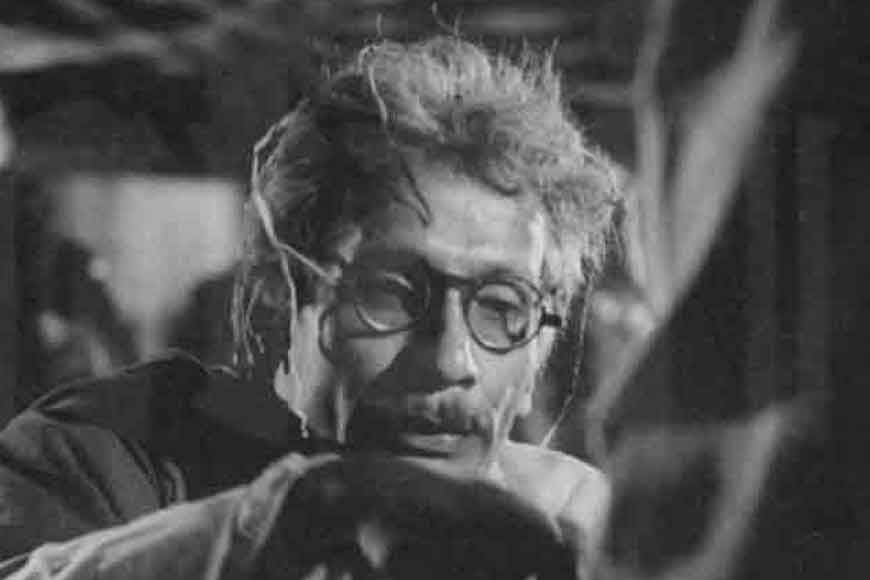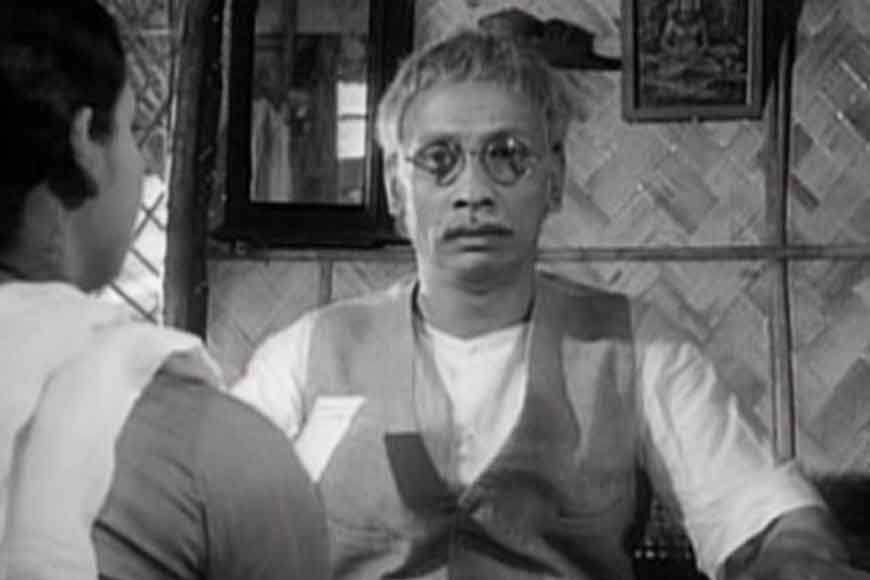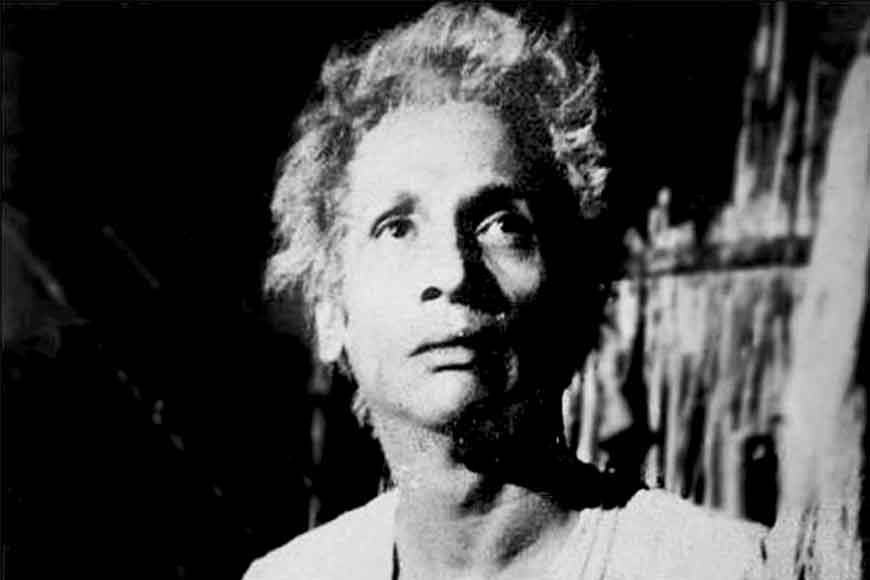Bijon Bhattacharya: the dreamer who believed in the power of performing arts - GetBengal story

Bijon Bhattacharya, the radical playwright and actor from Bengal
Leading playwright, director, actor, script writer for films and political activist Bijon Bhattacharya is synonymous with his play, Nabanno, but people seldom discuss the political thinker’s ideals and theories. Bhattacharya was a man much ahead of his times. He was a dreamer, who staunchly believed in the power of the pen and performing arts which, he believed, could change and uplift society and benefit the human race. For him, performing on stage was akin to presenting a slice of real life.
Bhattacharya had transformed/camouflaged the Midnapore of 1942 Quit India resistance into Aminpur village in his play. He not only wanted the play to be a document of the famine of 1943 but had ample farsightedness even in such a close temporal proximity to the disaster, to place the calamity in its proper context of economic and political factors leading to the disaster. Given the political orientation of the anti-fascist movements and the I.P.T.A of which Bhattacharya was an active participant, such clarity of vision is not really unexpected.
Bhattacharya was born into an affluent Brahmin zamindar family on July 17, 1917 in Khankhanapur, a village in Faridpur district, now in Bangladesh. His father was Khsirodbihari and mother was Suvarnaprabha. His grandfather, Rashbehari, was a despotic administrator who was mortally dreaded by his subjects. He had a band of trained armed guards who instilled fear in the minds of the masses. There is an interesting tale about one of the guards, Babur Ali, who worked under Rashbehari. Bijon Bhattacharya often regaled his audience with a story smattered with good humor.
He would say, in the 1940s, Babur Ali and Kiran Shankar Roy’s family (a prominent Congress leader and former Home Minister of West Bengal) got embroiled in a bitter civil case about the ownership of a large plot. At that point of time, Roy had been contemplating an alliance with the Muslim League that would have given him a lot of mileage and advantage in his political career. However, Roy lost the golden opportunity post the communal riots of 1946, Bhattacharya would chuckle and say, because Babur Ali defeated Roy’s men and acquired the land rights. Poor Roy was so intent on this land squabble that he could not concentrate on his political career and discarded his plan to join the Muslim League mid-way.
 Bijon Bhattachrya, one of the founding members of the All India People’s Theatre
Bijon Bhattachrya, one of the founding members of the All India People’s Theatre
Khsirodbihari was never keen to take over the reins of the zamindari from his father. Instead, he chose teaching as his profession and relocated to Arbelia in present-day North 24 Parganas with his family long before Partition. Like his father, Bijon too, was never interested on landed property. After school, he joined Ashutosh College and later shifted to Ripon College. During this period, he came in contact with a new socio-political ideology hitherto unknown to him. Bhattacharya was stirred intellectually and gravitated towards leftist philosophy. The pull was too strong for him to resist and he left his studies mid-way.
Meanwhile, in 1943, Bengal suffered one of the worst human-derived famines in the world, which killed almost three million people — as a direct result of British World War II. The Quit India Movement was intense which antagonized the colonial masters who came down heavily on Indians and unleashed a reign of terror and oppression. Amid such a volatile situation, the All India People's Theatre (IPTA) was formed on May 25, 1943. Bhattacharya was one of the founder members of IPTA.
A year later, Bhattacharya wrote his magnum opus, Nabanna (New Harvest). Nabanna is a watershed in the history of the Indian stage on several counts. It marks a break from the commercial stage and the inception of an activist, amateur theatre. It transcended the limitations of the naturalistic stage to make way for a versatile décor which added pace to the episodic action. It was first staged in 1944 under the direction of Sombhu Mitra and later in 1948, by Bohurupee under the direction of Kumar Roy. The play centres around the Bengal famine of 1943. It focuses on the Samaddar family and tells the story of the villagers of Aminpur. The play was positioned as IPTA’s ‘Voice of Bengal’ and staged in different parts of the country. It was a major success and the production fetched Rs 3 lakhs which was disbursed for famine relief in rural Bengal.
Bhattacharya met his future wife, author and social worker Mahasweta Devi during this time. They both were members of Progressive Writers’ Association formed in 1936. In those days, Bhattacharya was a prolific fiction writer and was a master story-teller who wrote under the pseudonym of Sahajatri. many short stories during this time and experimented with the short story genre. In fact, poet Subhash Mukhopadhyay would often say humorously that Bijon Bhattacharya emerged in the cultural scene as a story writer but left midway to join theatre and musicians’ group. Theatre and film critic Shamik Bhattacharya seconds this opinion when he evaluates Bhattacharya’s first published and directed play, Aagoon. He says the play is more akin to a short story and he had penned this at a time when experiments were being done randomly by Bengali short story writers in both style and content.
He wrote several successful stage plays, including ‘Jabanbandi’, ‘Mora Chand’, ‘Debigarjan’ and ‘Garbhabati Janani’ and also novels, short stories and operas. Mahasweta Devi acted in his play, Jiyon Kanya. They married in 1947 and in 1948, their only son, Nabarun was born. During this time, the couple lived in the commune with other comrades but in 1948, Bijon had differences of opinion with his associates and he left IPTA.
The couple rented a one-room tenement and struggled to make ends meet. This was a dark phase in their lives and their marital bliss was replaced by discord. The couple’s relationship became volatile and Mahasweta Devi left her husband and child and went away. Bhattacharya brought up his son single-handedly. In the meantime, he worked as a journalist and joined Ananda Bazar Patrika. He wrote fiction, plays, directed and acted in both theatre and films. But Bhattacharya’s bohemian nature and an urge for intellectual fulfilment made him restless and he could not stick to any profession or passion for long.
After leaving IPTA, Bhattacharya formed Calcutta Theatre group. He staunchly believed that theatre is interactional art. The audience is an integral part of the play and through dialogues, the performers have to reach the audience and create a space where interaction/dialogue is initiated and carried forward with the audience.
 Bijon Bhattacharya in the classic play Nabanna
Bijon Bhattacharya in the classic play Nabanna
Bhattacharya’s father had introduced him to Shakespeare and other classical playwrights, but he was never attracted to conventional theatre. He would say, he was more apt to get his inspiration from ordinary situations. He would observe the serpentine queue formed in front of the fair price shop where people from all walks of life congregated. These people would come out of the narrow confines of their pre-defined socio-political-cultural or religious identities and raise their voice together against any injustice. This, according to Bhattacharya, was communism in its true form. Long before Badal Sarkar, Bhattacharya believed and propagated the concept of taking out theatre from the proscenium to the streets, amid the masses.
Bhattacharya probably did not want to see theatre or acting as an organized form because he believed that would stifle its natural movement. Maybe that is the reason why he continued acting when a nail pierced his foot during staging a play at Mukta Mancha in 1978, he did not bother to pay attention to it. The gnash was deep, but he continued his acting. He did not get an opportunity to take it out between two scenes due to lack of time. Finally, when the final curtains came down, blood was oozing from his foot. He returned home and vomited blood twice at night and then it was all over. He left the world stage on January 19, 1978. That was an end of an era.










